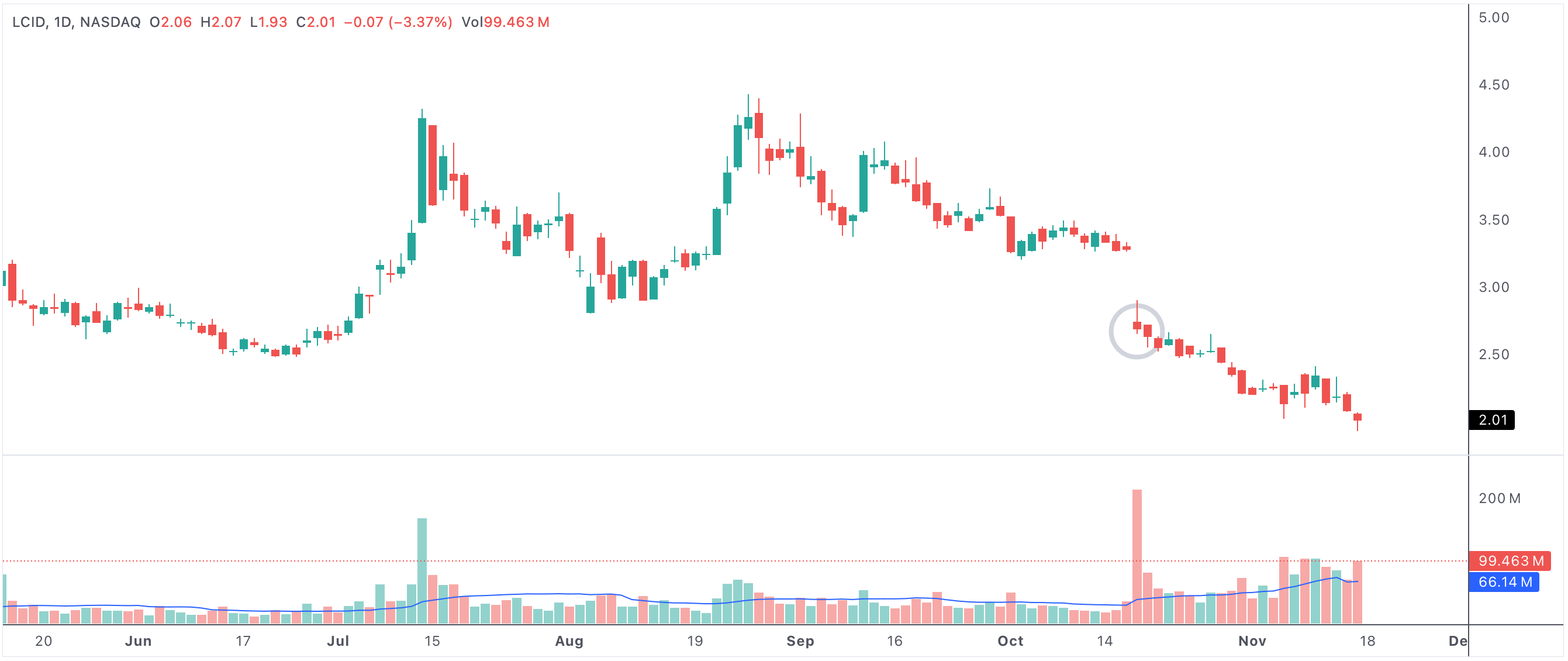Red day and bearish 2-down breakout - technical signal of strong selling pressure
When analyzing price action, a red day followed by a clear bearish breakout 2-down pattern—where the breakout bar itself closes red—stands out as one of the most telling technical signals of strong selling pressure. This combination is closely monitored by technical analysts and short-term traders, as it often marks a shift in market sentiment and can signal the start or continuation of a pronounced downtrend.

redredbear
An example of a stock with a red day followed by a bearish breakout 2-down
Red day followed by a bearish breakout 2-down with the bar itself red
Understanding the Red Day and Bearish 2-Down Breakout
A red day is defined by a session where the closing price is lower than the opening price, resulting in a red candlestick on most charting platforms. This is the market’s way of signaling that sellers had the upper hand for the day. However, the signal grows in importance when this red day is followed by a bearish breakout 2-down—meaning the subsequent bar not only breaks the previous low but also closes red, confirming continued and intensifying selling pressure.
This pattern acts as a warning that bears are firmly in control, and that buyers have either retreated or been overwhelmed. For those watching short-term trends or considering swing trades, such a signal often prompts defensive action, such as tightening stops or exiting long positions.
Why the Red Bar Confirmation Matters
The color and close of the breakout bar provide essential context. When the 2-down breakout bar itself is red, it confirms that sellers not only broke key support but also maintained control through the close. If this bar had closed green, it could have indicated a bear trap or a quick buyer response. Instead, the persistent red closes signal a lack of bullish conviction and reinforce the bearish outlook.
Volume also plays a critical role in confirming this pattern. Elevated volume on the breakout day often confirms institutional participation and adds credibility to the move. Technical traders look for this kind of confirmation to avoid false signals.
Common Contexts and Implications
This pattern frequently appears after a period of sideways movement or after a weak rebound in a broader downtrend. When the red day and 2-down breakout occur near key support levels or after a failed rally, it often leads to accelerated price declines. This is because traders and algorithms alike interpret the breakdown as a signal to increase short positions or exit remaining longs, creating a feedback loop of selling pressure.
The bearish momentum that follows can persist for several sessions, especially if there are no significant support zones immediately below. Short-term traders may look for oversold conditions or reversal signals before considering a countertrend trade.
Trading Strategies and Risk Management
Many traders use this pattern as a trigger for initiating or adding to short positions. Others might use it as a warning to avoid new long positions until signs of stabilization emerge. However, as with any technical signal, risk management is crucial. False breakdowns can occur, especially if the broader market sentiment shifts rapidly due to news or unexpected events. Setting stop-loss orders above the high of the breakout bar is a common method to limit losses if a reversal materializes.
- A red day signals the start of selling pressure and a bearish outlook.
- The subsequent 2-down breakout confirms that bears have control and that the downtrend is likely to continue.
- High volume on the breakout day adds weight to the bearish signal.
- This pattern can serve as an alert for traders to initiate short positions or tighten risk controls.
- Downward momentum often accelerates after the pattern, but traders should remain alert for potential reversals or oversold conditions.
In summary, a red day followed by a bearish 2-down breakout where the breakout bar is also red is a high-conviction technical signal of sustained selling pressure and a likely continuation of the downtrend. While it’s a powerful pattern for traders to recognize, using it in conjunction with volume analysis, support levels, and prudent risk management remains key for successful trading and portfolio protection.